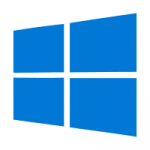 There aren’t as many desktop email applications around as there used to be. Sure, some of the old classics are still available (hello Eudora), but they typically don’t provide support for the latest technologies.
There aren’t as many desktop email applications around as there used to be. Sure, some of the old classics are still available (hello Eudora), but they typically don’t provide support for the latest technologies.
I’ve never been comfortable using a web-based application for my email. I do use GMail, but mostly for client support. I just prefer to have more control over my email archive than is possible with a web-based solution. Email is a critical component of my business and personal communications, and leaving it at the mercy of Google or some other company is not acceptable.
That said, there are still a few good options for desktop email on Windows. I still use Outlook, because it’s always been rock solid for me, handling dozens of accounts efficiently and reliably. But Outlook is only available as part of Microsoft Office, and only the more expensive Professional or Business versions at that. And Office is not cheap, costing upwards of $300 USD.
So I’m always on the lookout for alternatives to Outlook. And sitting at the top of that list is Thunderbird, Mozilla’s email client. Thunderbird’s three-pane user interface should be familiar to anyone who has used Outlook, Outlook Express, or just about any other Windows email application. It supports all current email-related technologies.
Mozilla issued a major update for Thunderbird in early October: version 60.0. This update provides numerous improvements to the user interface, including a much-needed revamp for the way attachments are handled.
More recently, Thunderbird 60.2.1 was released to fix seven security issues in earlier versions, as well as a few non-security bugs.
As with Firefox, you can check the current version of Thunderbird by navigating its ‘hamburger’ menu (top right) to Help > About Mozilla Thunderbird. Doing this will usually trigger an update, if one is available.
 There’s another new version of Flash: 31.0.0.153. A single Critical security vulnerability is addressed in this version. The vulnerability, when exploited, can allow for arbitrary code execution.
There’s another new version of Flash: 31.0.0.153. A single Critical security vulnerability is addressed in this version. The vulnerability, when exploited, can allow for arbitrary code execution. boot13
boot13 According to the
According to the  By now you’re probably aware that the push to connect everything to the Internet has been at the cost of security. Many IoT (Internet of Things) devices are poorly secured and can expose users to significant threats. I always encourage people to consider whether they really need their toaster to be connected to the Internet, and disable that feature if the answer is no.
By now you’re probably aware that the push to connect everything to the Internet has been at the cost of security. Many IoT (Internet of Things) devices are poorly secured and can expose users to significant threats. I always encourage people to consider whether they really need their toaster to be connected to the Internet, and disable that feature if the answer is no. Last month, after users reported file deletion issues, Microsoft took the Windows 10 October Update offline. Yesterday, the (now fixed) update was again
Last month, after users reported file deletion issues, Microsoft took the Windows 10 October Update offline. Yesterday, the (now fixed) update was again  This month, we have fifty-six updates from Microsoft. The updates fix security issues in .NET, Office, Internet Explorer, Edge, Microsoft Project, SharePoint, PowerShell, Skype, and Windows. Analysis of the
This month, we have fifty-six updates from Microsoft. The updates fix security issues in .NET, Office, Internet Explorer, Edge, Microsoft Project, SharePoint, PowerShell, Skype, and Windows. Analysis of the  Meanwhile, Adobe released new versions of Flash and Reader.
Meanwhile, Adobe released new versions of Flash and Reader.  Released on October 31,
Released on October 31,  Released last week,
Released last week,